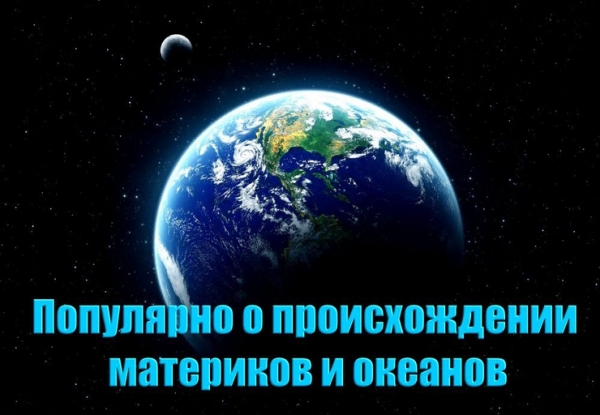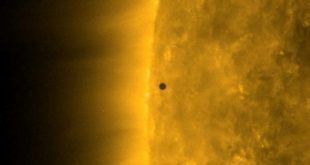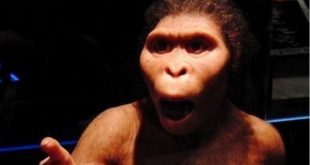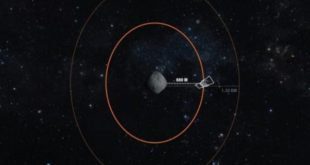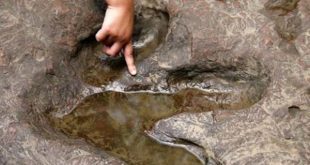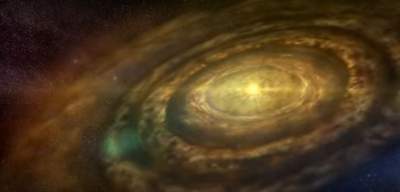 Solar system before he could have another planet that was swallowed by the Sun.
Solar system before he could have another planet that was swallowed by the Sun.
Our Solar system seems an orderly place.
Planetary orbits are fairly predictable trajectories, so that we can send a spacecraft in a multi-year journey, and it will surely reach its destination. But ten-year journey to happen in a single moment in the cosmic sense.
The young Solar system was a very different place. Before the planets settled into stable orbits, everything was moving much more erratically. The collision and fracture of bodies prevailed in the early days. Thus, according to one theory, the Moon was the result of Earth collision with planet Theia.
Recently a new study by researchers Rebecca J. Martin and Mario Livio from the University of Nevada (Las Vegas). It says that our Solar system could previously have another planet that was swallowed by the Sun.
Ironically, proof of the existence of this planet may be the lack of evidence in itself. This planet could be a super-Earth circling in orbit close to the Sun and end up “falling” on it under the action of gravity.
In the early days of our solar system the Sun formed at the center of the mass of gas and dust. In the end, when it has gained enough mass, then come to life in a burst of nuclear fusion. Around the Sun was formed protoplanetary disk of gas and dust from which arose the world.
What is missing in our Solar system, so it’s no bodies and even stone debris in the area between mercury and the Sun. This may seem normal, but the mission “Kepler” tells us that it is not. More than half of other stellar systems space telescope has discovered a planet in the area where in our Solar system to complete silence.
A key element of the idea is that the planet is not always formed in the place where eventually achieve orbital stability. Depending on a number of factors of the planet can migrate inside the system towards the star or away from it. The authors of the study by Martin and Livio believe that the Solar system formed super-Earth, which probably fell into the Sun.
According to them, super-Earth likely formed in the inner region of the Solar system in a low orbit between the Sun and mercury. The fact that in this area there are no objects and even space debris, suggests that during the formation of super-Earth cleared the space from all the rocky boulders, then fell to the Sun, removing all traces of its existence.
The authors also note the possible cause of death a super-Earth. They suggest that Jupiter may have originated within the system at a distance of about 1.5 AU from the Sun. At this point, he was locked in resonance with Saturn. This interaction made the gas giants to migrate into the outer region of the system on their current orbits. This process pushed the super-Earth into the Sun, destroying it.
In support of the theory also supports the combined mass of the planets of the inner Solar system, which is much less than in the same discovered star systems. At the same time, if a super-Earth died in the beginning of their formation, current planets simply do not have enough building material, as it aspired to uniting with the previously formed planet.
The key idea of this study is the so-called “dead zone”. From the point of view of the Solar system and protoplanetary disc, the dead zone is a zone of low turbulence, which promotes the formation of planets.
A system with a dead zone enough material to form super-earths in its place. However, since the birth of major planets takes a long time, a dead zone must be long-lived. If the protoplanetary disk is no dead zone, it is probably too rapid movement will not lead to formation of super-Earth close to their star. The turbulence in the protoplanetary disk promotes the formation of super-Earth away from the stars and its subsequent migration into the system.
As the authors say in the conclusion of the study, the lack of a super-Earth in our Solar system is somewhat puzzling, given that more than half of the observed exoplanetary systems contain such a planet, and the fact that inside the orbit of mercury is nothing that can’t be a coincidence.
Scientists are moving on to vindicate the probability of the scenario of the formation of a super-Earth, which later died, is being absorbed by the Sun. There are still many variables that need to be modified to confirm the scenario. For a young Solar system necessary to model the dead zone, to determine the depth of turbulence in the protoplanetary disk, as well as its required temperature. The fact that these things have to be within a certain range will be able to explain why our system doesn’t have a super-Earth.

